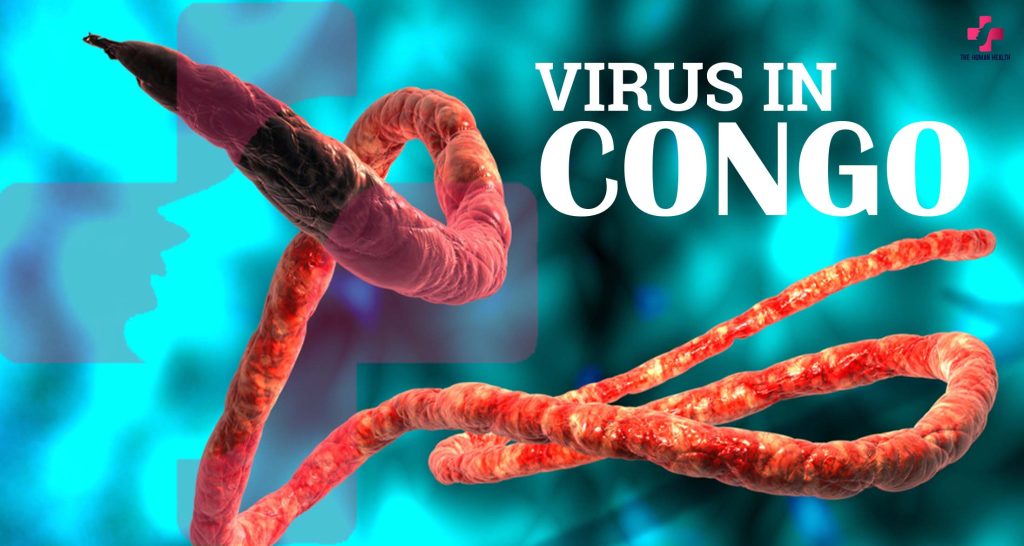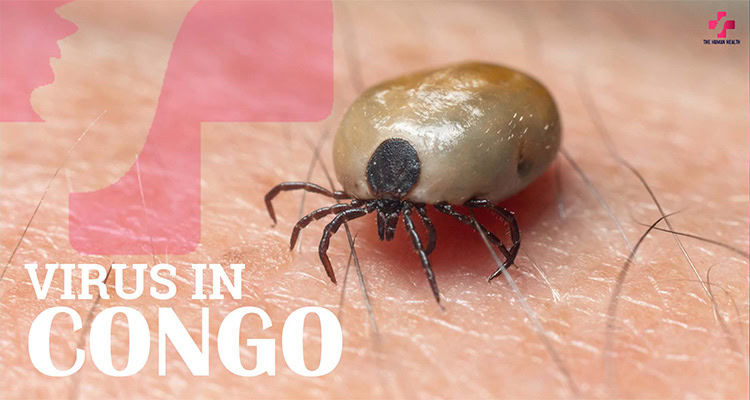Viruses in the Democratic Republic of the Congo
The Democratic Republic of the Congo (DRC) has had many virus outbreaks. Its warm, wet forests and big crowds help diseases spread fast. The country has faced serious viruses like Ebola, Marburg, and Monkeypox. These diseases make people sick, hurt the economy, and change daily life.
Ebola is one of the worst viruses in the DRC. It was first found in 1976 in Yambuku. Since then, there have been many outbreaks. Ebola spreads quickly and causes fever, bleeding, and sometimes death. One of the worst outbreaks was from 2018 to 2020 in North Kivu and Ituri. Fighting and weak healthcare made it hard to stop the virus. This outbreak led to over 3,400 cases and more than 2,200 deaths
The Marburg virus is also very dangerous. It is like Ebola and causes high fever, bleeding, and organ failure. Though not as common as Ebola, it is still a big problem. People can get it from sick bats or from touching fluids of sick people. Quick action is needed to stop it from spreading.
Monkeypox is another virus in the DRC. It is like smallpox but not as bad. It causes fever, rashes, and breathing problems. The DRC has had thousands of monkeypox cases. It spreads from animals like rodents and monkeys or from touching sick people. Monkeypox cases have gone up in recent years, worrying many people around the world.
Other diseases in the DRC include measles, yellow fever, and cholera. These make the healthcare system even weaker. Dirty water, few vaccines, and hard-to-reach doctors make things worse. War and people moving from place to place also help diseases spread.
Even with these problems, the DRC is getting better at fighting outbreaks. Better tracking, vaccines, and help from groups like the WHO and CDC have helped. The Ebola vaccine has saved many lives.
To stop viruses, the DRC needs more hospitals, doctors, and community programs. Quick action and good research can help control outbreaks. Clean water, vaccines, and fast medical care can save lives.
What is this? Virus In Congo
In Congo, there are many viruses that cause sickness. The Democratic Republic of the Congo (DRC) is known for these outbreaks. Some of these viruses are new to the area, and others come from different parts of the world. These diseases cause big health problems for the people in Congo.
The Ebola virus is the most famous. It was first found near the Ebola River in 1976. Ebola can be very serious. It spreads through contact with the body fluids of an infected person. The symptoms are fever, vomiting, diarrhea, and bleeding. Ebola can kill many people, but new treatments have saved some lives. Congo has had many Ebola outbreaks, the most recent one in 2020. The virus spreads quickly in places with weak healthcare.
Another virus is Marburg. It is like Ebola, spreading through body fluids. Marburg also has a high death rate, but it is less common than Ebola. The DRC has faced a few outbreaks of Marburg too.
Congo also has Zika. This virus is spread by mosquitoes. If a pregnant woman gets Zika, it can hurt her baby. Zika is more common in other places, like South America, but Congo has also had some cases. Health groups worry about Zika because it can cause serious birth defects.
Yellow Fever is another disease in Congo. This virus is also spread by mosquitoes. While there is a vaccine, the disease still comes up from time to time. Yellow Fever causes fever, chills, and liver problems. It can even be deadly.
To fight these viruses, the DRC and global health groups are taking action. They are vaccinating people against Ebola and trying new treatments. They also use health protocols, like isolating patients and tracking the people they’ve been in contact with. However, Congo’s healthcare system still struggles. War and political issues make it harder to stop the spread of disease.
In conclusion, Congo faces many health challenges. Viruses like Ebola, Marburg, Zika, and Yellow Fever affect the population. Even though new treatments and vaccines have helped, Congo still needs support to prevent more outbreaks. The DRC government and international groups must work together to help keep people safe.
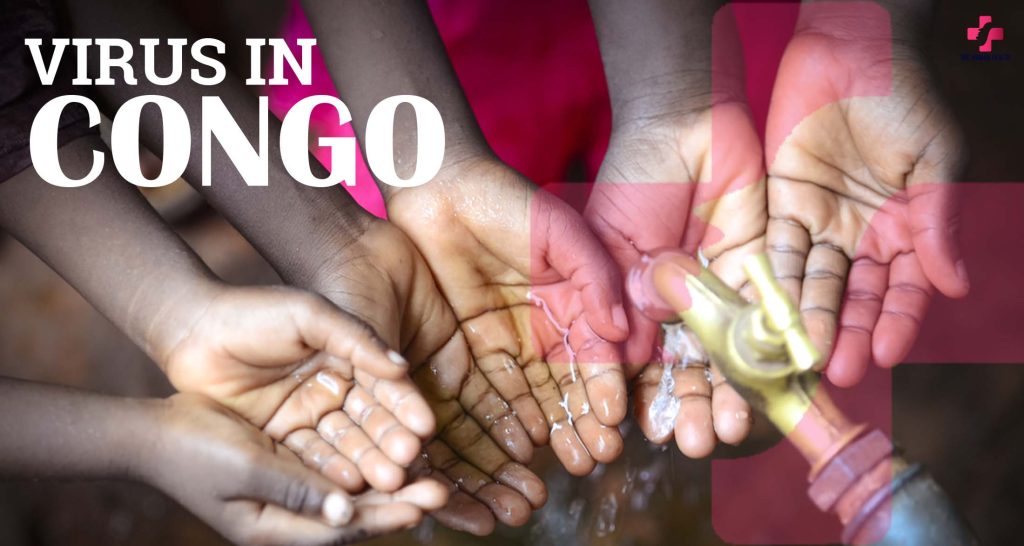
Why Do Viruses Spread in Congo?
Congo, in Central Africa, often faces viru outbreaks like Ebola. These outbreaks cause loss of life, economic problems, and global concern. But why do these outbreaks happen so often in Congo?
- Where the Outbreaks Start
Congo has many forests, wetlands, and remote areas. These places are home to animals like bats, monkeys, and rodents. These animals carry viruses, including Ebola. People who hunt or eat these animals can catch the viru. When people touch or eat bushmeat, they risk getting sick. - Healthcare is Not Strong Enough
Congo has a weak healthcare system. There are not enough hospitals, workers, or tools to fight outbreaks quickly. In rural areas, there may be no hospitals at all. Without quick help, small problems become big outbreaks, especially with viruses like Ebola, which spread fast. - It’s Hard to Detect Outbreaks Early
Congo has trouble finding outbreaks early. This happens because there is no strong system to track diseases. The viru can spread before anyone notices. By the time health officials know, it might already be too late. - Cultural Practices and Beliefs
In Congo, burial customs can spread viruses. People may touch the dead, which can pass on the viru. Also, people travel long distances to see family. This can spread the viru from one place to another.
Some people do not trust doctors or vaccines. This can slow down efforts to stop outbreaks. If people do not take the medicine, the disease can spread further.
- Travel Helps Viruses Spread
Today, people can travel easily. If a viru starts in a remote area, it can spread to big cities or other countries quickly. This makes it harder to stop.
Conclusion
Viru outbreaks in Congo happen because of many things. These include the environment, healthcare, cultural practices, and travel. Congo needs better healthcare, tracking, and public health education to stop these outbreaks. With help, Congo can reduce the number of outbreaks and protect more people.
What Can Be This Harm? Virus In Congo
The Democratic Republic of the Congo (DRC) has many problems. These include its location, politics, and health. One major issue is viral outbreaks. A new virus is causing worry. Experts are trying to understand it and stop it. This article talks about what could happen and how people are trying to control it.
The DRC has faced many deadly viruses. Ebola is the most known. In 2018, Ebola spread quickly, causing fear and killing over 2,000 people. The world helped stop it, but new viruses still appear. The country’s forests, wildlife, and weak healthcare make it easy for these diseases to spread.
This new virus is still being studied. Experts are figuring out how it spreads and how to treat it. Early reports show it is not as deadly as Ebola, but it spreads fast, which is a concern.
This virus can cause harm. It can spread quickly and put pressure on the weak healthcare system in the DRC. The healthcare system lacks money and resources. Hospitals often don’t have enough supplies or staff to handle big outbreaks. Because of this, many people may not get help in time.
The virus could also hurt the country in other ways. It could affect daily life, like education and food. If many people get sick, farmers may not be able to work. Travel and trade may stop, hurting the economy. Schools and businesses might close, making things worse.
Experts don’t know exactly how the virus spreads, but it looks like it spreads through close contact, like Ebola. People near those who are sick can catch it quickly. Many parts of the DRC are crowded, so the virus could spread even faster.
The virus could also affect vulnerable people, like children, older adults, and people with weak immune systems. If these groups are hit harder, the damage could be worse.
Global groups like the World Health Organization (WHO) and Doctors Without Borders (MSF) are helping the DRC. They are setting up places for sick people to stay, giving vaccines, and teaching people how to stay safe. Other countries are also helping.
Stopping the virus is hard. There are problems like political issues, hard-to-reach areas, and people not trusting health workers. Misinformation and fear make it harder for health workers to help.
We don’t know how bad the virus will be, but Congo faces big risks from new viruses. The world must stay alert and help the DRC improve healthcare. With support, Congo can manage and defeat the virus.
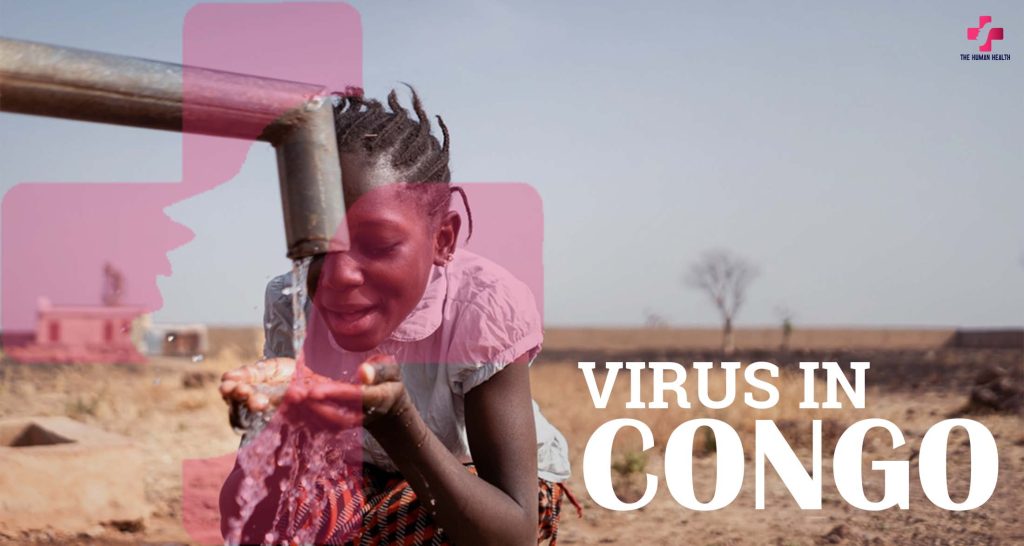
There an Age Limit for This? Virus In Congo
Viruses are a big problem. Some spread fast and hurt people. One virus that keeps coming up in Congo is Ebola. It kills a lot of people and worries the world. People also wonder if only certain ages can get it or die from it. Understanding how Ebola affects different people helps us protect those who are most at risk.
Recent Illness in Congo
A new illness has been spreading in Congo. It has made many people sick and caused deaths. It’s important to know the signs of this sickness so people can get help fast.
Early Signs:
At first, people feel sick with fever, tiredness, and body aches. They may also have headaches, coughs, and a runny nose or bleeding nose. Some people get worse quickly and die in just a few hours.
When It Gets Worse:
As the illness goes on, people may get:
Brain Problems: Stiff neck, confusion, and being sensitive to light.
Stomach Problems: Feeling sick, throwing up, diarrhea, and stomach pain.
Bleeding: Nosebleeds, bleeding gums, and red spots on the skin.
What Causes It?
The World Health Organization (WHO) is trying to find out where the illness comes from. Some possible causes are:
Bad Water: The sickness may be from dirty or poisoned water. It can cause fever, aches, and bleeding.
Animals to People: The illness may spread from animals, like bats. Some people got sick after eating bat meat.
Poison: The sickness could also be caused by harmful chemicals.
Other Illnesses It Looks Like:
This sickness may look like other illnesses, like:
Crimean-Congo Fever (CCHF): This illness also causes fever, pain, and bleeding. But Ebola and other fevers don’t seem to be the cause here.
Meningitis: Meningitis also causes fever and a stiff neck. WHO is still checking if this could be the cause.
What to Do:
The sick areas are hard to reach, so it’s tough to give treatment. WHO and other health groups are working with local teams to check the illness and help people. People should watch for symptoms and see a doctor right away if they feel sick. It’s also important to drink clean water, stay clean, and not eat animals that might carry the disease.
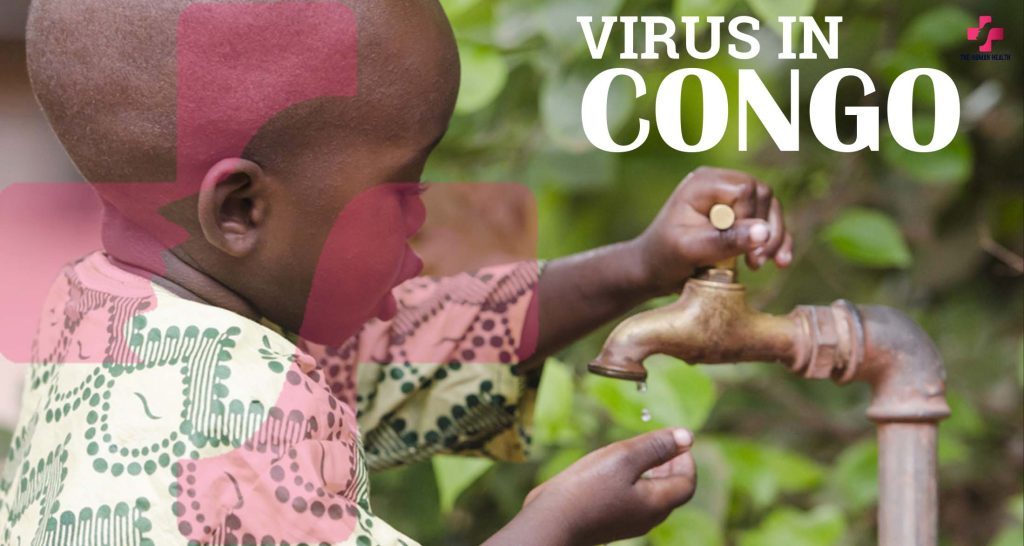
What Are The Ways to Avoid This? Virus In Congo
Viruses like Ebola are a big problem in Congo. To stop them from spreading, everyone must take action. There are many things we can do to help prevent the virus.
- Keep Clean
Washing hands often is one of the best ways to avoid getting sick. Wash with soap and water, especially after touching things, eating, or using the restroom. If you don’t have soap and water, use hand sanitizer. Avoid touching your face, especially your eyes, nose, and mouth.
It’s also important to keep things around you clean. Clean surfaces like phones, door handles, and anything people touch often.
- Stay Away from Sick People
To avoid getting sick, stay away from anyone who has symptoms of the virus, like fever, vomiting, or diarrhea. If someone is sick, they should stay isolated from others. Healthcare workers must wear masks, gloves, and gowns when helping sick people. - Isolate the Sick
When there is an outbreak, sick people must be kept apart from healthy ones. This stops the virus from spreading. People who might have been exposed should be checked for signs of illness, even if they feel fine.
Hospitals should have places for sick people to get treatment without putting others at risk.
- Teach People About the Virus
It’s important to tell everyone about the virus and how it spreads. The government and healthcare groups can help by sharing information. They should explain how to stay safe and what to do if someone gets sick.
Local leaders can help spread the word and encourage people to follow safety rules.
- Get Vaccinated
Vaccines help stop the virus. For example, there is an Ebola vaccine. When there is an outbreak, we must vaccinate as many people as possible, especially those in high-risk areas. This will help stop the virus from spreading. - Make Healthcare Better
In places where viruses spread often, like Congo, it’s important to have good healthcare systems. Hospitals must be ready for outbreaks. Healthcare workers should be trained, and more tests, treatment, and vaccines should be available.
Working together with other countries can also help provide the support needed to fight the virus.
- Stop Animal-to-Human Spread
Some viruses spread from animals to humans. In the case of Ebola, fruit bats carry the virus. People should avoid touching wild animals and eating them. Educating people about these risks is also important.
Conclusion
To stop viruses from spreading, we must work together. From washing hands to educating people and making sure healthcare systems are strong, every step helps. Vaccines and international help are also key. If we all act, we can protect people and keep viruses from spreading.
Conclusion?
Viruses have been a big problem in Congo. Ebola is the most dangerous, but other viruses like cholera, HIV, and coronavirus also cause harm. These outbreaks bring many challenges, but the people of Congo are strong. Still, better healthcare, infrastructure, and more help from the world are needed.
Ebola has hurt Congo a lot. It has killed many people and overwhelmed hospitals. Even though we have vaccines and treatments, it’s hard to get them to far-off areas. There aren’t enough doctors, and many places are dangerous because of violence. These problems make it hard to stop the virus from spreading.
Misinformation is also a problem. Many people in rural areas don’t trust outside help. They don’t always believe the virus is serious. In the past, there’s been distrust of the government and foreign help. During Ebola, this led to people ignoring health advice and even attacking health workers. This makes it harder to stop the virus and make sure people get the care they need.
The world needs to help Congo fight these viruses. The government is working hard, but help from groups like the World Health Organization (WHO) and Médecins Sans Frontières (MSF) is essential. These groups bring resources and experts to fight the outbreaks. Still, the DRC will always be at risk, so we need to keep preparing and responding. Long-term investment in healthcare and better communication is needed to help stop the spread of misinformation.
Vaccines and treatments are helping. The rVSV-ZEBOV vaccine has saved many lives during the Ebola outbreak. But it’s still hard to get the vaccine to people, especially in dangerous areas. The virus can change quickly and spread fast, so it’s hard to stop completely. We need to keep researching new vaccines and treatments.
In conclusion, the virus outbreaks in Congo teach us many lessons. They show us where health systems need improvement and how important it is for the world to work together. The people of Congo are strong, but more help is needed to improve healthcare, fight misinformation, and prepare for future outbreaks. With more investment and cooperation, Congo can reduce the harm caused by these diseases.
